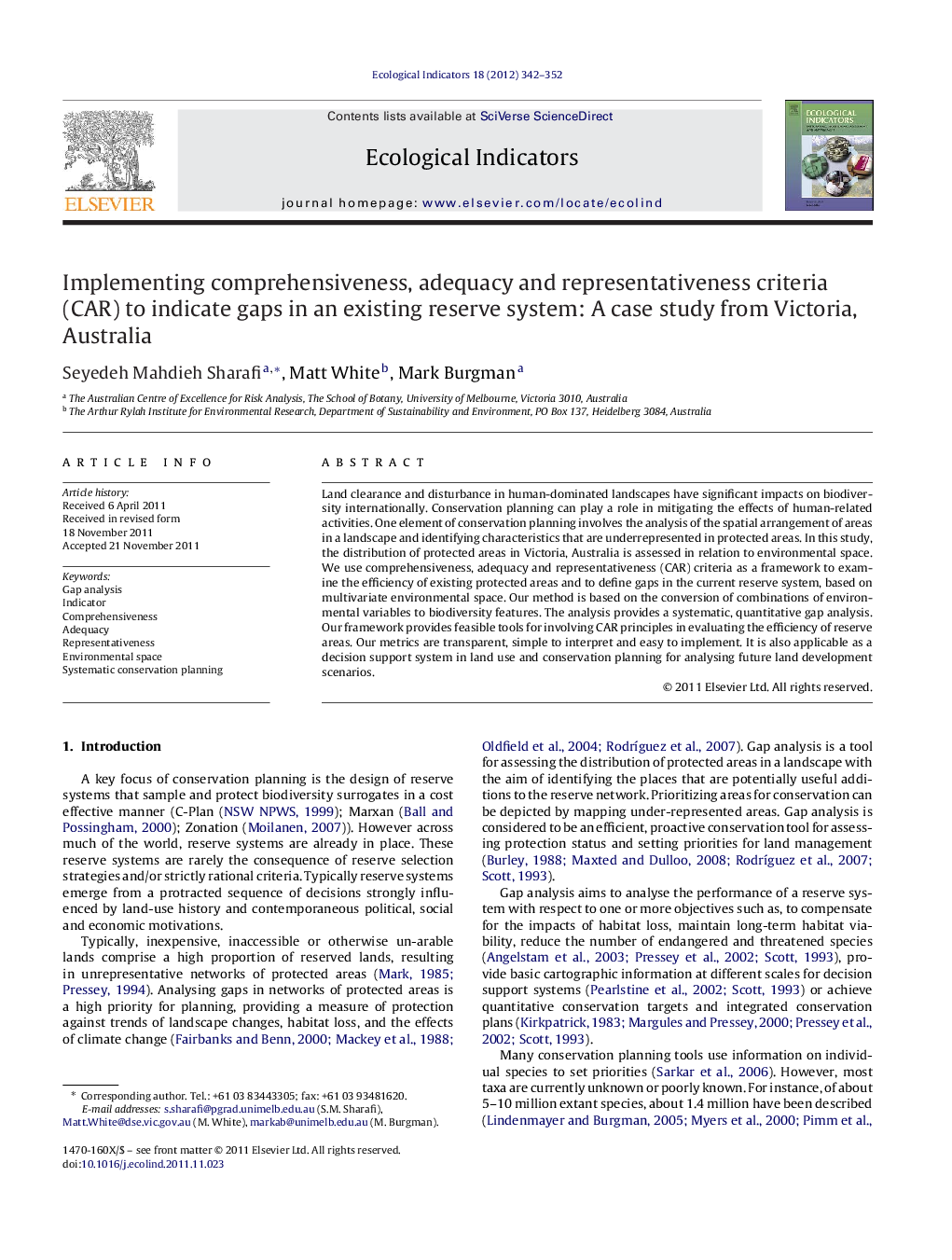| Article ID | Journal | Published Year | Pages | File Type |
|---|---|---|---|---|
| 4373790 | Ecological Indicators | 2012 | 11 Pages |
Land clearance and disturbance in human-dominated landscapes have significant impacts on biodiversity internationally. Conservation planning can play a role in mitigating the effects of human-related activities. One element of conservation planning involves the analysis of the spatial arrangement of areas in a landscape and identifying characteristics that are underrepresented in protected areas. In this study, the distribution of protected areas in Victoria, Australia is assessed in relation to environmental space. We use comprehensiveness, adequacy and representativeness (CAR) criteria as a framework to examine the efficiency of existing protected areas and to define gaps in the current reserve system, based on multivariate environmental space. Our method is based on the conversion of combinations of environmental variables to biodiversity features. The analysis provides a systematic, quantitative gap analysis. Our framework provides feasible tools for involving CAR principles in evaluating the efficiency of reserve areas. Our metrics are transparent, simple to interpret and easy to implement. It is also applicable as a decision support system in land use and conservation planning for analysing future land development scenarios.
